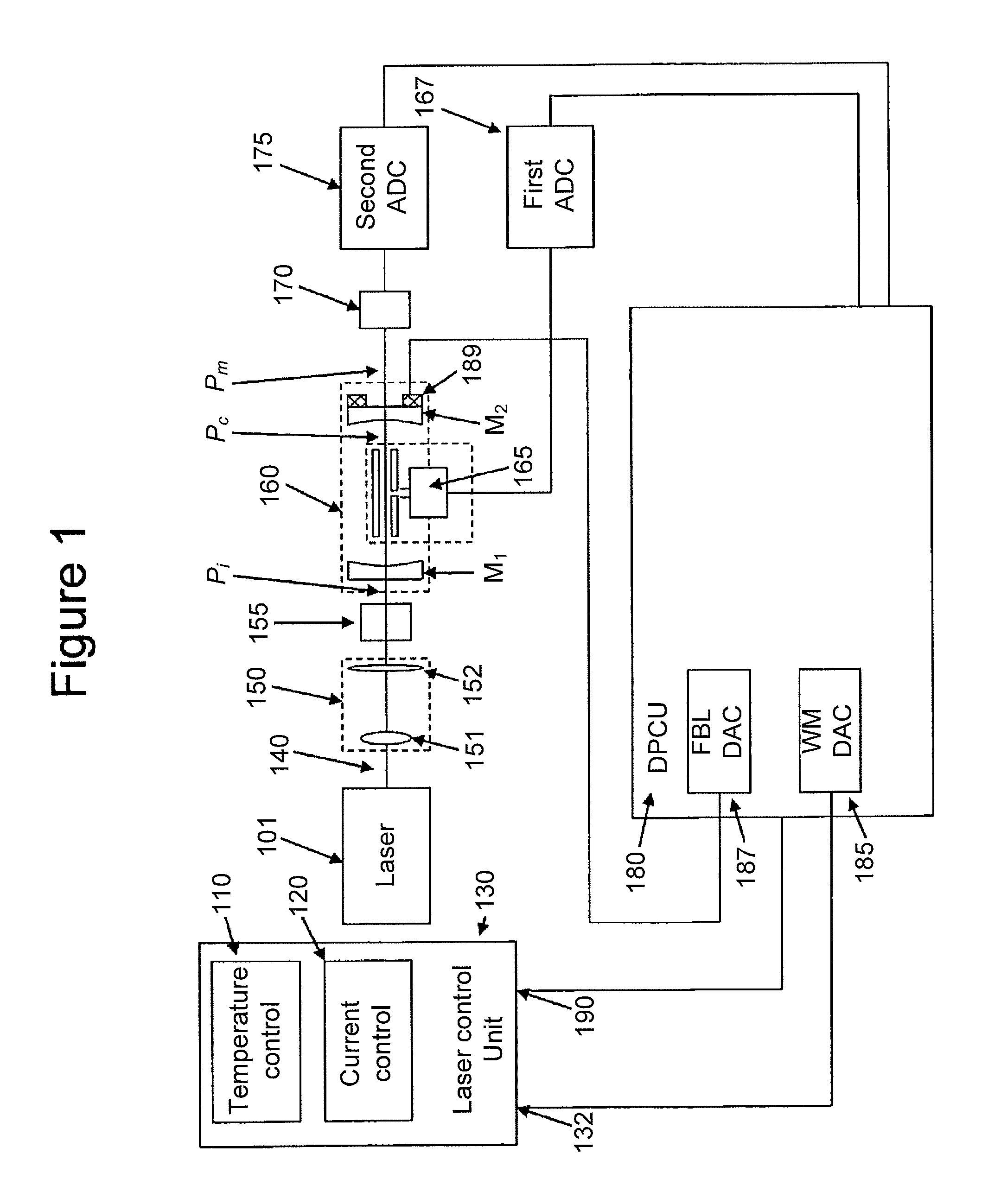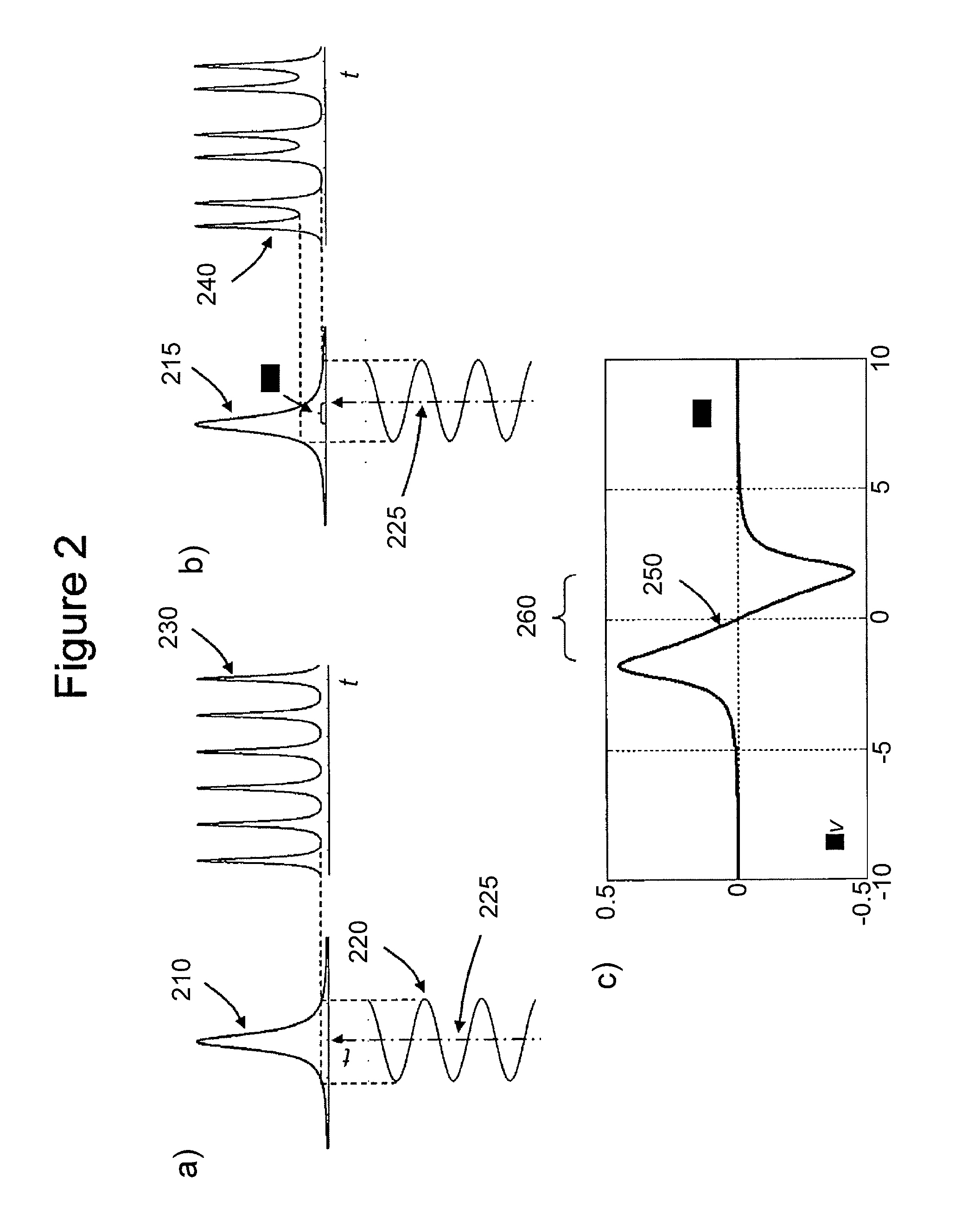Method and apparatus for the photo-acoustic identification and quantification of analyte species in a gaseous or liquid medium
a photo-acoustic and analyte technology, applied in the field of ultra-sensitive analysis of gaseous species, can solve the problems of low immunity, inability to find a single commercial gas detection product, and limited impact on the gas sensing industry, so as to improve the sensitivity, improve the sensitivity, and improve the effect of low-power laser radiation
- Summary
- Abstract
- Description
- Claims
- Application Information
AI Technical Summary
Benefits of technology
Problems solved by technology
Method used
Image
Examples
Embodiment Construction
[0042]We now provide a detailed description of the method of the invention and several embodiments of the apparatus applicable to the method.
[0043]A schematic diagram of the gas detection system of the present invention is shown in FIG. 1. The present invention in a preferred embodiment contains a semiconductor laser source 101, preferably a distributed feedback (DFB) laser emitting a single emission line that can be tuned in the vicinity of the absorption line of the analyte species of interest within a range of several wave numbers. The operating wavelength of the laser can be changed or modulated, for example, by changing the operating temperature of the semiconductor laser chip, and / or its drive current. This is accomplished by electronic modules known in the art such as a diode laser temperature controller 110 and / or a low noise diode laser current controller 120. In other embodiments the laser can be of other known type subject to the requirement that its wavelength of operati...
PUM
 Login to View More
Login to View More Abstract
Description
Claims
Application Information
 Login to View More
Login to View More - R&D
- Intellectual Property
- Life Sciences
- Materials
- Tech Scout
- Unparalleled Data Quality
- Higher Quality Content
- 60% Fewer Hallucinations
Browse by: Latest US Patents, China's latest patents, Technical Efficacy Thesaurus, Application Domain, Technology Topic, Popular Technical Reports.
© 2025 PatSnap. All rights reserved.Legal|Privacy policy|Modern Slavery Act Transparency Statement|Sitemap|About US| Contact US: help@patsnap.com



